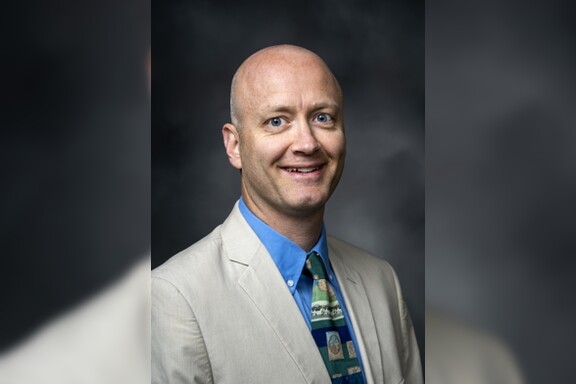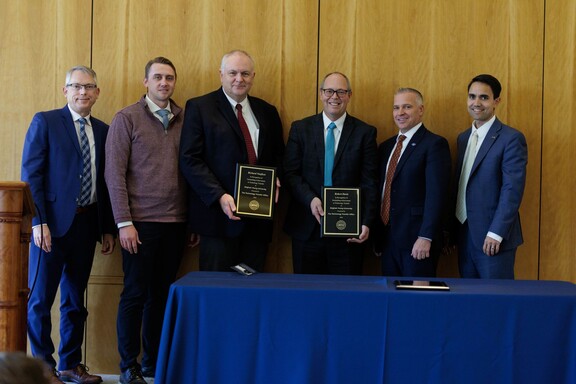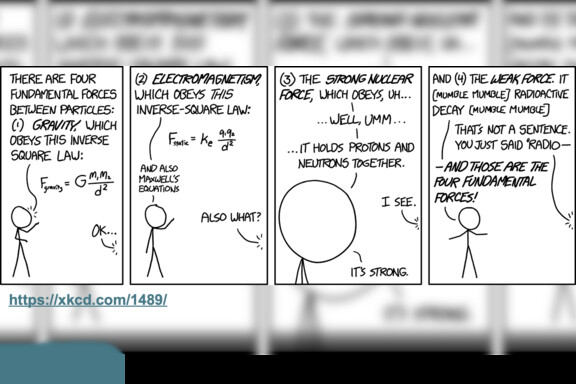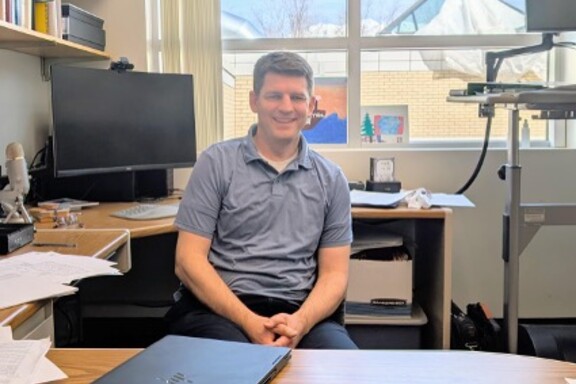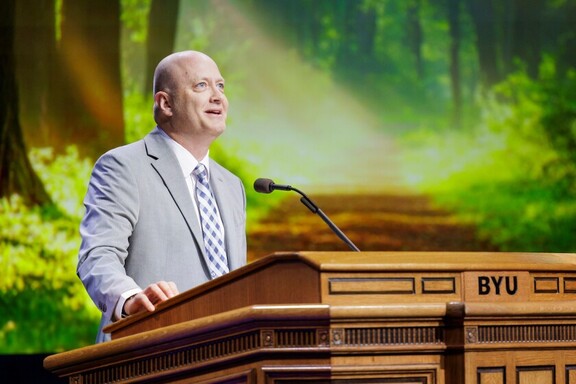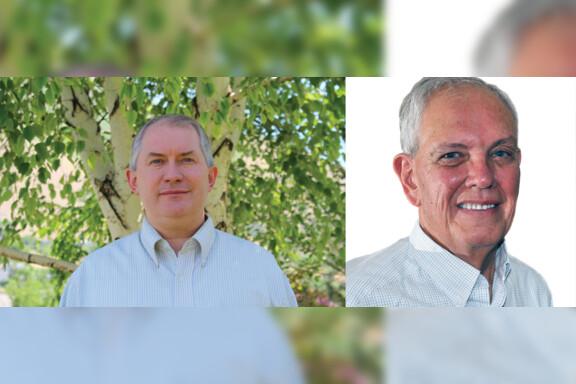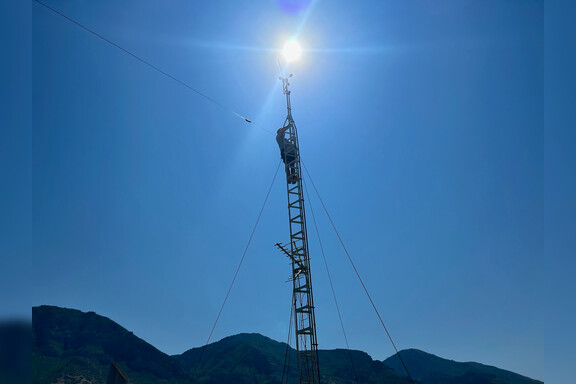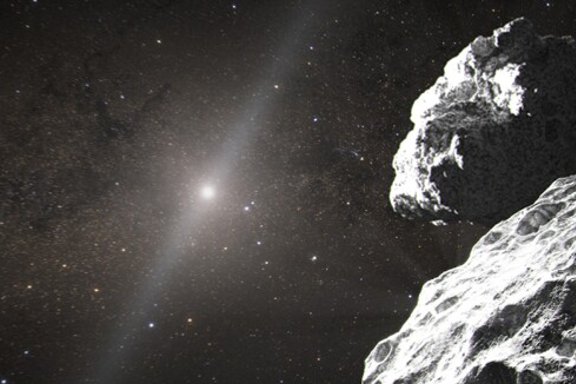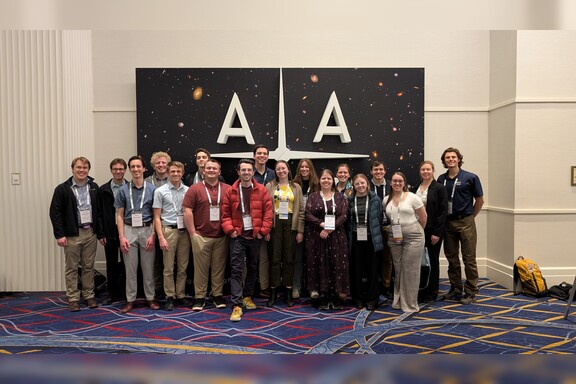By Mara Dille
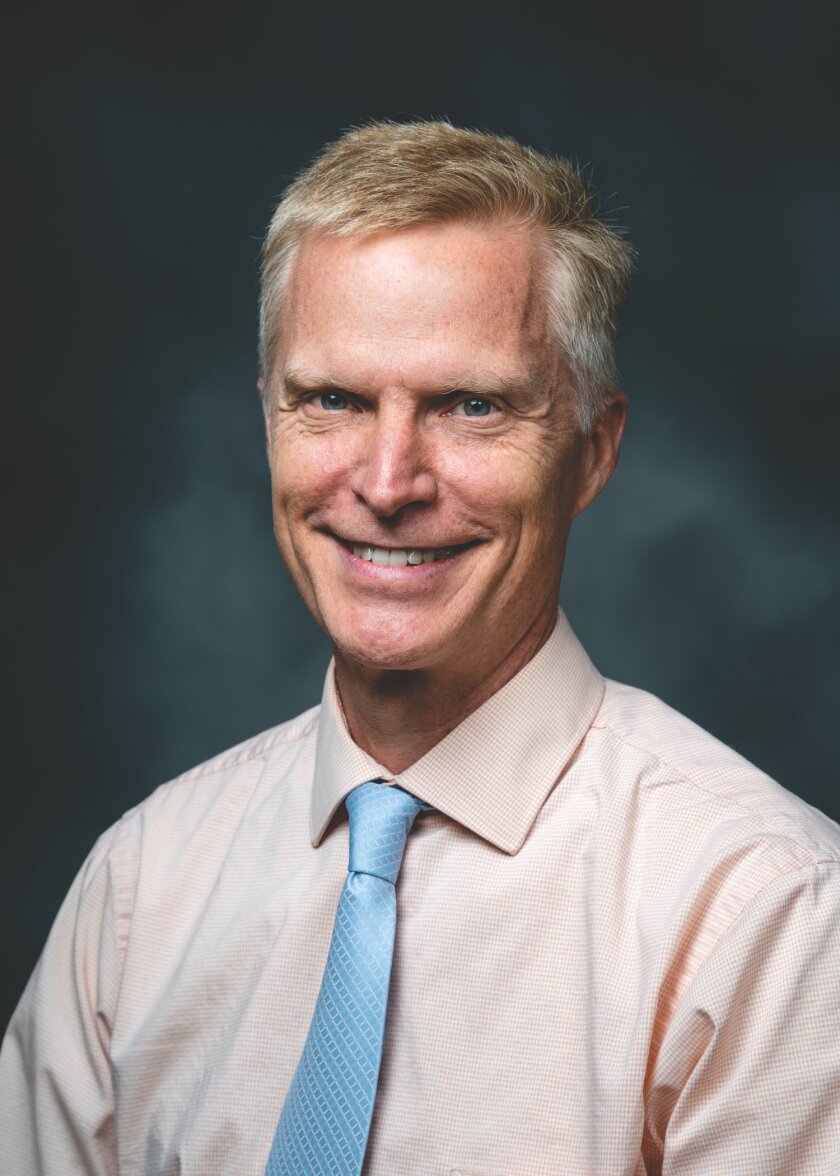
Despite the inherent time constraints of engaging undergraduate and graduate students in research, Bergeson enjoys teaching this “seek and find” principle to his students, a principle that has become his philosophy for life. He has found that whenever there is a lack of a clear direction on how to move forward, it simply means a need to experiment has presented itself. Navigating the unknown happens at all levels, from the micro error bar type that occurs in specific experiments to the macro awareness that there are still swaths of the universe we do not understand. For Bergeson, embracing this uncertainty is a given in any adventure―in research, in life, and in every worthwhile pursuit—and he wouldn’t have it any other way.
As a professor of physics at BYU for 24 years, Dr. Scott Bergeson is no stranger to different facets of uncertainty. He is an active researcher of atomic, plasma, and laser physics, a field in physics that has many inherent unknowns. In the face of these uncertainties, Bergeson recently published his research in a prominent science journal, Nature, regarding an exciting development in crucial temperature relations in Coulomb mixtures. These relations seek to close the knowledge gap regarding the kinetic properties of these developing systems, and to move the theory of plasma research forward.
With the help of funding from the National Science Foundation (NSF) and the Air Force Office of Scientific Research (AFOSR), Bergeson and his colleagues compared measured temperature relaxation rates to simulations and theoretical models, validating an approach to measure material properties in binary mixtures. Their findings were published in Nature Communications . In response to this research advancement, Dr. Vyacheslav Lukin, Program Director for plasma physics at NSF commented, “It is great to see how table-top experiments and simulations using open source software can combine to study fundamental properties of plasmas to the benefit of both discovery science and national security.”
In his postdoc at the National Institute of Standards and Technology (NIST), Bergeson assisted in pioneering the technique of ultracold neutral plasma, the method used in his recent temperature relaxation experiment. Laser cooling is the process of bringing something down to around zero Kelvin (-273.15◦ C). The invention of laser cooling has led to many technological innovations, and was recognized with the 1997 Nobel Prize in physics. The application of laser cooling technology to plasma science introduces multiple variables to be controlled, increasing the complexity of the experiment. Bergeson was instrumental in building the ultracold plasma experiments housed on campus after he joined the BYU faculty in 1998.
To explain the current issues facing plasma fusion research, Bergeson uses an analogy of matches and fire. Matches are used to start the reaction that produces a bonfire from a stack of wood, but it’s the burning of the wood that produces the tangible heat enjoyed on cold nights. The analogy unfolds as Bergeson explains that the current function of lasers in plasma fusion research is equivalent to the match itself producing the only heat of the fire. The desired outcome in laser fusion research is to have the lasers perform the allegorical job of the match—to be the energy source that starts a fusion reaction.
In the field of plasma science, however, the process of lasers starting fusion reactions is not quite as simple as that. Scientists are attempting to optimize the laser-driven fusion technology using state-of-the-art facilities, Bergeson explained. Optimizing this process requires additional knowledge, some of which can come from small-scale experiments coupled with theoretical and computational work. The goal of these small-scale experiments is to inform theory, so that theory can better guide the large-scale experiments. Theorists create models for particularly complex systems such that simulations can mimic pieces of the puzzle. Consequently, it is necessary for the researchers to further refine and test the extent of their models and simulations.
Bergeson and his research team perform experiments under conditions where classic plasma theories begin to break down and greater uncertainty is introduced. They focus on experiments that are thermodynamically similar to high energy density systems, specifically the aforementioned issue of developing the role of lasers in fusion reactions. The theories representing these systems involve infinities of energy states for numerous atoms, which have become too complex to be modeled using detailed balance. In explaining the background for his own experiment, Bergeson noted that approximations are made in order to simplify these systems.
The current question regarding laser-driven fusion reactions is the level at which these approximations can be made, and how much uncertainty can be removed. Bergeson and his fellow researchers have identified specific points within this question in relation to how much complexity should be included. They found that the theoretical model regarding the temperature of three important ions in laser-driven fusion reactions was too simplistic. For example, previous plasma researchers assumed that these temperatures reached equilibrium instantaneously. However, Bergeson’s team has now developed a relationship between the mass of the ions and the rate in which the respective temperatures returned to equilibrium, a process referred to as temperature relaxation.
This newfound relationship can now be used by the theorists to refine simulations. As a result, Bergeson and his collaborators have refined one piece of the puzzle of thermal processes in non-ideal plasmas. Although determining this temperature relationship was important, Bergeson recognizes that they have only contributed a small part to the “grand adventure” of plasma research.
Uncertainty plays a role not just in Bergeson’s profession as a scientist, but specifically in his role as a professor at BYU. He explains that in order to receive funding, experimentation must be at the forefront of his field. This creates a conundrum, where students are still learning the rudiments of the field while BYU puts student researchers on the forefront of teacher’s priorities. Rather than resenting this tension, Bergeson relishes it. “My job isn’t to prove how smart I am, it’s to help my students succeed,” he said.
In his quest to facilitate student success, Bergeson is keenly aware that students are generally taught scientific principles within a finite amount of time—as a series of solved problems—and don’t often see the actual scientific process at work. This process, however, completely misses the pathos of researchers being completely flummoxed at some point. They then work towards overcoming these previously unanswered questions, often taking years to complete their research. As a result, Bergeson shares the humorous axiom, “Yesterday’s Nobel prize is tomorrow’s homework” to explain the disparity between the two.
More Information on This Article
News and Events


